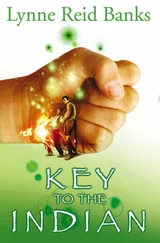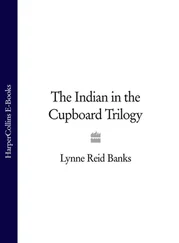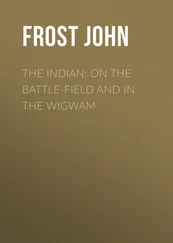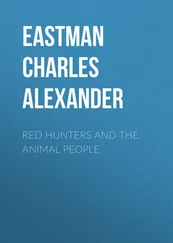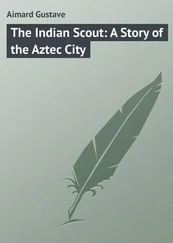Charles Eastman - The Indian To-day
Здесь есть возможность читать онлайн «Charles Eastman - The Indian To-day» — ознакомительный отрывок электронной книги совершенно бесплатно, а после прочтения отрывка купить полную версию. В некоторых случаях можно слушать аудио, скачать через торрент в формате fb2 и присутствует краткое содержание. Жанр: foreign_antique, foreign_prose, на английском языке. Описание произведения, (предисловие) а так же отзывы посетителей доступны на портале библиотеки ЛибКат.
- Название:The Indian To-day
- Автор:
- Жанр:
- Год:неизвестен
- ISBN:нет данных
- Рейтинг книги:3 / 5. Голосов: 1
-
Избранное:Добавить в избранное
- Отзывы:
-
Ваша оценка:
- 60
- 1
- 2
- 3
- 4
- 5
The Indian To-day: краткое содержание, описание и аннотация
Предлагаем к чтению аннотацию, описание, краткое содержание или предисловие (зависит от того, что написал сам автор книги «The Indian To-day»). Если вы не нашли необходимую информацию о книге — напишите в комментариях, мы постараемся отыскать её.
The Indian To-day — читать онлайн ознакомительный отрывок
Ниже представлен текст книги, разбитый по страницам. Система сохранения места последней прочитанной страницы, позволяет с удобством читать онлайн бесплатно книгу «The Indian To-day», без необходимости каждый раз заново искать на чём Вы остановились. Поставьте закладку, и сможете в любой момент перейти на страницу, на которой закончили чтение.
Интервал:
Закладка:
In 1824 the United States required of the tribes in this region to define their territory, a demand which intensified and gave a new turn to their intertribal warfare. The use of gun, horse, and whiskey completed the demoralization, and thus the truly "savage" warfare had its origin, ever increasing in bitterness until it culminated in resistance to the Government, in 1862, one hundred years after the struggle and defeat of the great Pontiac.
A treaty was made in 1851 with the Minnesota Sioux to which one band was not a party. This was the one commonly known as Inkpaduta's band, whose usual winter resort was in northwestern Iowa. White settlers went upon the ceded lands, and when this band returned to Spirit Lake after their summer's roving they found it occupied. Owing to a very severe winter and the presence of the settlements, the surrounding country became depleted of game, and the Sioux, who were starving, sought aid among the settlers. No doubt they became a nuisance, and were so treated, which treatment they very naturally resented, and thus arose the "Spirit Lake massacre." The rest of the tribe condemned the act, and Sioux from the Redwood reservation pursued the guilty band until they overtook and killed two of Inkpaduta's sons. The others were driven back among the wild Sioux. This was their first offence, after more than a century of contact with the whites.
Little Crow's band formed the east wing of the Sioux nation, and were the first to enter reservation life. The causes of their outbreak, a few years later, were practically the same as in many other instances, for in its broad features the history of one Indian tribe is the history of all. Their hunting-grounds were taken from them, and the promised support was not forthcoming. Some of the chiefs began to "play politics" like white men, and through their signatures, secretly given, a payment of $98,000 due the tribe was made to the Indian traders. Little Crow himself was involved in this steal, and was made head chief by the whites, who wished to have some one in this position whom they could deal with. But soon the non-payment of annuities brought the Indians to the verge of starvation, and in despair they forced Little Crow to lead them in revolt. In August, 1862, they massacred the agency employees and extended their attack to the white settlers, killing many and destroying a large amount of property, before a part of the tribe fled into Canada and the rest surrendered to General Sibley.
Next came the struggle of the Western Sioux and Northern Cheyennes in defence of their homes. The building of the Northern Pacific and the Union Pacific transcontinental railroads had necessitated the making of new treaties with these people. Scarcely was the agreement completed by which they ceded a right of way in return for assurances of permanent and absolute possession of other territory, including the Black Hills and Bighorn Mountains, when gold was discovered in these regions. This fact created great excitement and a general determination to dispossess the Sioux of the country just guaranteed to them, which no white man was to enter without the consent of three fourths of the adult men of the tribe.
Public excitement was intense, and the Government found itself unable to clear the country of intruders and to protect the rights of the Sioux. It was reported that there were no less than fifteen thousand men in the Black Hills district placer-mining and prospecting for the yellow metal. The authority of the United States was defied almost openly by the frontier press and people. Then the Indians took matters into their own hands, carried on a guerilla warfare against immigrants, and harassed the forts until the army was forced to enter upon a campaign against them. In 1868 another treaty was made, but the great chief, Red Cloud, would not sign it until he saw forts C. F. Smith and Phil Kearney abandoned. Here is probably the only instance in American history in which a single Indian chief was able to enforce his demands and make a great government back down. At that time it would have cost immense sums of money and many lives to conquer him, and would have retarded the development of the West by many years.
It is a fact that Sitting Bull was thoroughly opposed to yielding any more territory. No doubt he foresaw the inevitable result. He had taken up the cause of the Eastern Sioux in Minnesota and fought Sibley and Sully in 1862. He had supported Red Cloud in his protests against the establishment of the Bozeman trail, and against the new forts, although thus far these aggressions had not affected him directly. But when surveyors began work on the Northern Pacific, they entered his particular domain, and it was time for him to fight in its defence. Unfortunately for him, the other bands of Sioux whom he had helped in their time of need were now all settled upon reservations, so that he had not much support except from Crazy Horse's band, and the so-called hostiles or renegades of the Western bands. Hostilities began in 1872, culminating in 1876 with the famous "Custer fight," which practically ended the struggle, for after annihilating Custer's command the Indians fled into British America. Four years later Sitting Bull was induced to come in and settle down upon the Sioux reservation.
The Modoc war in Oregon and Idaho, in which the Shoshones and Bannocks were involved, was really a part of this same movement – namely, the last defence of their hunting-grounds by the Plains Indians, as was also the resistance of the Cheyennes and Comanches farther south, and of the Utes in 1877, simultaneously with the last stand of the Sioux. It had been found impossible to conquer the Plains Indians without destroying the buffalo, their main subsistence. Therefore vast herds were ruthlessly destroyed by the United States army, and by 1880 they were practically extinct. Since it was found cheaper to feed than to fight them, the one-time warriors were corralled upon their reservations and kept alive upon Government rations.
All Indian warfare worthy the name had now come to an end. There were left Geronimo's small bands of Apaches, who were hunted down in an all but inaccessible country and finally captured and confined in Southern forts. More recent "Indian outbreaks," so-called, are usually a mere ruse of the politicians, or are riots caused by the disaffection of a few Indians unjustly treated by their Government agents. The only really serious disturbance within a generation was the "Ghost-dance war" of 1890-91. And yet this cannot fairly be called an Indian war. It arose in a religious craze which need not have been a serious matter if wisely handled. The people were hungry and disheartened, their future looked hopeless, and all their appeals were disregarded. At this juncture the suggestion of a Messiah, offering hope of miraculous intervention in behalf of the red man, appealed to many, and the "new religion" spread far and fast. In some tribes it soon died a natural death, but in the Sioux country it was unwisely forbidden by the authorities, and led to grave results.
At Pine Ridge, in December of 1890, the ghost-dancers had come in to the agency and the situation was apparently under control when the attempted arrest of Sitting Bull in his cabin by Indian police led to his death and the stampeding of his people. Several of the stampeded bands came down to Pine Ridge, where they were met by United States troops, disarmed, and shot down after one man had resisted disarmament by firing off his weapon. This was the massacre of Wounded Knee, where about 300 Indians, two thirds of them women and children, were mown down with machine-guns within a few minutes. For some days there was danger of a reprisal, but the crisis passed, and those Indians who had fled to the "Bad Lands" were induced to come in and surrender. From that time on the Indian tribes of the United States have been on a peace footing.
Читать дальшеИнтервал:
Закладка:
Похожие книги на «The Indian To-day»
Представляем Вашему вниманию похожие книги на «The Indian To-day» списком для выбора. Мы отобрали схожую по названию и смыслу литературу в надежде предоставить читателям больше вариантов отыскать новые, интересные, ещё непрочитанные произведения.
Обсуждение, отзывы о книге «The Indian To-day» и просто собственные мнения читателей. Оставьте ваши комментарии, напишите, что Вы думаете о произведении, его смысле или главных героях. Укажите что конкретно понравилось, а что нет, и почему Вы так считаете.
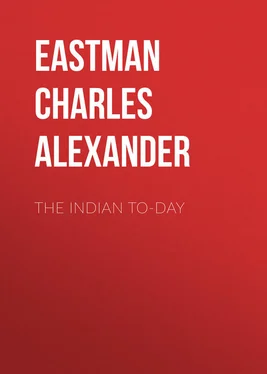
![О Генри - Бабье лето Джонсона Сухого Лога [The Indian Summer of Dry Valley, Johnson]](/books/407344/o-genri-babe-leto-dzhonsona-suhogo-loga-the-india-thumb.webp)



